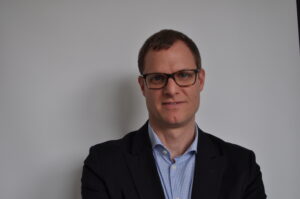
The urge to ease the energy peak-hour becomes more critical as the electrification of societies contributes to a continuously increasing demand, resulting in a challenging task for energy grid operators (DSOs).
Currently, within the scope of the FlexiGrid project, a demo-area to test energy flexibility services is being built in Switzerland, led by HES-SO. At this site heat pumps and cooling devices are being used as assets to offer flexibility and balancing capacity to local network operators.

Jessen Page, HES-SO
“The starting point of our research lies in the mismatch between local solar panels (photovoltaic’s, PV’s) production and consumption. More specifically, during certain times of the day the PV production of our demo-area is insufficient to meet the site’s consumption and electricity is being imported from the grid, whilst at other times more electricity is being produced by the PV panels than is consumed. Because exported PV production is bought by the DSO at a price lower than its break-even cost there is an incentive in trying to manage appliances, such as heat pumps and cooling devices, to maximise PV self-consumption”, says Jessen Page from HES-SO.
Manage the increasing number of solar roof tops
At a district or city level, the increasing installation of PV panels will have another effect. Indeed, DSOs will soon be faced with unpredictable exports of surplus PV production into the local electricity grid that they must manage, and they will be looking for local partners capable of offering flexible loads to stabilize their network.
Algorithms for flexibility
The same infrastructure and algorithms used to manage appliances for the purpose of PV self-consumption can now be used to provide flexibility, for a cost, to the local DSO, OIKEN in the case of the Swiss pilot site. These algorithms use model predictive control to assess future needs for heat and cold and estimate to what extent heat pumps or cooling devices can be switched on and off when flexibility is requested while at the same time minimizing the discomfort of occupants.
Providing flexibility without reducing comfort
The degree to which it will be noticeable depends on the properties of the building. In certain buildings, it might take up to a day before it is noticeable. Ultimately, the goal is to use the buffer effectively, hence having the least possible impact. For instance, by heating the building during the night and switching it off during the day, the grid will be relieved during the peak-hours, and hence the cost minimized.
As this is a state-of-the-art infrastructure that is not fully operational yet, there are many elements of the project that are still to be proven, not least how the service will be commercialised. Thus far the heating and cooling devices have been installed and the site is expected to be running by April 2022.
